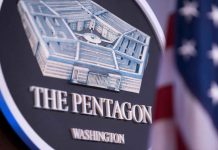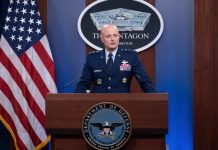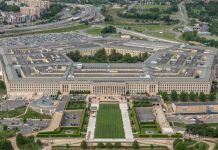WASHINGTON – NEWS – The Defense Department’s workforce and its partnerships with private industry remain at the core of the military’s ability to harness innovation and defend against emerging threats, the Pentagon’s top cyber official said today.
Speaking at the Ash Carter Exchange on Innovation and National Security in Washington, Air Force Gen. Timothy D. Haugh, commander of U.S. Cyber Command, said the power of the U.S. economy and private innovation remains at the core of ingenuity.
“And so how we think about our partnerships with industry is foundational to, really, our way forward,” Haugh said. “When we think about cybersecurity and the role that industry plays , we’re unique in that our domain is really a manmade domain, largely by Western industry.”
Haugh, who also serves as the director of the National Security Agency, said the organizations he oversees are uniquely postured to build partnerships “that take advantage of the overall ecosystem.”
One way DOD has built those relationships, he said, is through their authorities to collaborate with industry on information sharing.
“The number of cybersecurity advisories that have been done by the National Security Agency that really start to lay out what are the threats,” he said. “And having industry contribute to that really gives us a sight picture that not only affects government but allows us to also impact the cybersecurity industry in terms of being able to pass our understanding and synchronize that with the way industry sees it.”
That approach is especially critical when considering the protection of critical infrastructure, Haugh said.
“The more we’re able to partner with industry, and the ability for us to share and do that at the unclassified level, allows us to expand our partnerships and do it rapidly.”
Defense officials emphasized these partnerships in DOD’s first strategy aimed at enhancing cybersecurity across defense industry stakeholders, released in March.
The Defense Industrial Base Cybersecurity Strategy plots a course for increased focus and collaboration between the DOD and the U.S. defense industrial base on cybersecurity initiatives amid what officials say are persistent cyberthreats.
The strategy lays out DOD’s vision over the next three years for a secure, resilient and technologically superior U.S. defense industrial base to ensure the United States’ warfighting edge.
It outlines four goals aligned with that vision:
Strengthening DOD’s governance structure for U.S. defense industrial base cybersecurity;
Enhancing the cybersecurity posture of the U.S. defense industrial base;
Preserving the resiliency of critical defense industrial base capabilities in a cyber-contested environment; and
Improving cybersecurity collaboration between DOD and the U.S. defense industrial base.
Haugh emphasized that the defense industrial base remains at the core of the United States’ enduring advantage.
That advantage is further enabled by an innovative workforce that remains primed to capitalize on emerging technologies, Haugh said.
He added that continuing to cultivate the skills and ingenuity across the workforce remains at the core of his strategy to harness emerging technologies, such as generative artificial intelligence.
Spotlight: Artificial Intelligence
“We have a unique workforce,” Haugh said. “That is really our foundation: highly technical the ability to be able to operate and integrate technology quickly.”
The Ash Carter Exchange on Innovation and National Security is a two-day event to bring together pioneers and champions from the government, private sector and scientific community to examine how to advance collaboration in pursuit of national security. The late Ash Carter was the 25th Secretary of Defense.






